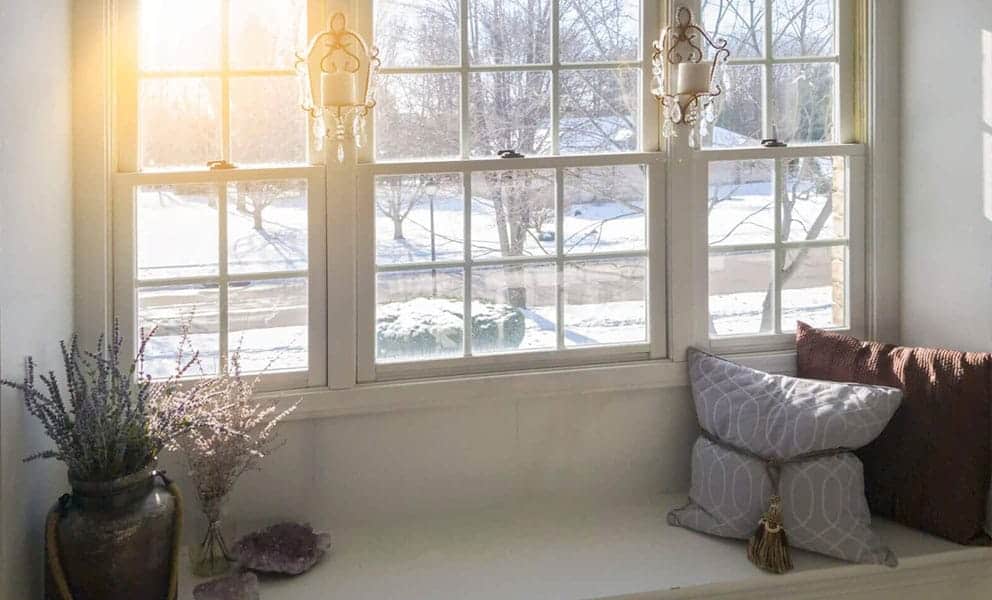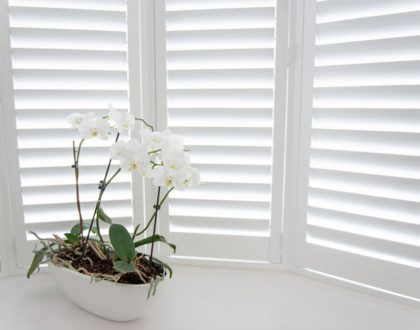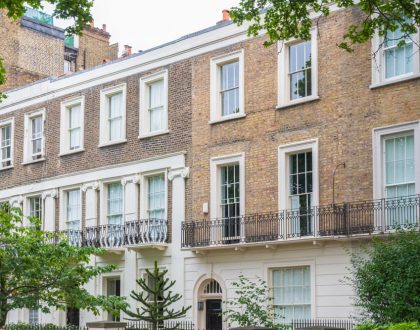Heat Loss Through Windows? Secondary Glazing Can Help

No one needs to be reminded of the rise in energy costs. It’s something that many people are constantly trying to combat as they keep the heating off and put on another layer of clothing.
Advice on how to conserve energy is much sought after as the temperatures drop and you start assessing your home for ways to cut costs. An obvious culprit in draining heat out of your home are your windows.
You could be forgiven for assuming that if your windows are closed, you are being effective in keeping the heat in. But did you know just how much heat is radiating out through the glazing and frames of your windows constantly, even when closed?
Old buildings with old-fashioned windows may look quaint and pleasing to the eye, but most of their windows and frames have tiny gaps as a method of ventilation. Thankfully, window design has massively changed and there is no need for any draughts or gaps of any kind in your home.
Let’s look at just how much heat can be lost through windows and what you can do to reduce it.
How much heat is lost through windows?
A typical house can lose around 10% of its heat through the windows. Around two-thirds of this is through the glazing. That’s a significant amount of energy that is disappearing and causing your bills to rise as you use your heating more.
The goal for a warm and properly insulated home is to have a reliable thermal envelope. This is a term for the area in your home that prevents air leaks, protects against drafts and keeps heat where you need it. Basically, it keeps warm air inside and cold air outside.
It’s extremely important that your home has a tightly sealed thermal envelope to keep temperatures where you want them to be. But it’s also vital in terms of energy-efficient – decreasing energy, saving on costs and improving your indoor air quality.
So, what areas of your home can trap heat? Anything in your house that protects the indoors from the outdoors is part of your thermal envelope.
For example –
- Windows
- Exterior walls
- Doors
- Floors
- Roofing
- Insulation added to any of those areas
Windows are a big reason why heat escapes from our homes. Naturally, heat will radiate through windows quicker than most other areas in your home and you could end up with huge energy bills if you don’t take preventative measures. Fortunately, these measures are easy and effective to do. Read on for how you can be proactive in conserving heat in your home.
Combatting heat loss through windows
There are many ways to conserve the heat in your home and stop it from escaping through your windows. DIY measures are becoming increasingly popular as people need to get creative to save on costs. When you don’t want to replace old or faulty windows or have a listed property that doesn’t allow you to change the aesthetic, why not consider some of the following suggestions?
- Close curtains more – a simple tip but very effective in keeping heat in
- Use blackout blinds to trap heat in
- Use insulating cellular blinds – the air cavity created by the cells give additional insulation
- Reflective window film blocks up to 80% of the sun’s glare but retains the heat
- Use plants, which will absorb heat and reduce the amount you lose from the room
- Invest in draught excluders
- Check if silicone is needed around windows
However, if you are looking for a more permanent way that is guaranteed to be effective in holding on to your heat, then secondary glazing is for you!
So, you’re considering secondary glazing…
Secondary glazing is an excellent method of retaining heat as well as giving your home a pleasing aesthetic. Simply put, it is a second window that is installed on the interior of the room to give your existing window protection.
By doing this, it ensures that all moisture and heat collects and disperses in the correct way – heat stays inside where it belongs and moisture evaporates without any of the nasty side effects, such as mould and damp.
Having secondary glazing on your windows can give you thermal efficiency of up to 60%, with an average property saving up to 15% in energy bills. That’s definitely something to consider, right? And there are no concerns over spoiling the look of your interior, as secondary glazing comes in different discreet styles to suit your look and budget.
What other benefits does secondary glazing offer?
- Eliminates condensation
- Significantly reduces outside noise
- Retains the original character of your home
- Increases security
- Value for money
- Restoring original windows versus uPVC is good for the environment
- Easy to install
Tests carried out show that secondary glazing
always outperforms double glazing as it has a U-value of 1.868 W/m2K, (the formula used to measure heat loss). The lower the number, the more effective the window is. For context, single-glazed windows have a U-value of 5.8 W/m2K.
So unlike with double glazing, you will not have to replace the whole window. Simply add secondary glazing to your existing windows and feel the difference almost immediately!
Clearview – providers of Sheffield’s high-quality secondary glazing
Clearview has the best solution when it comes to saving money on your heating bills. Our secondary glazing experts offer a professional and hassle-free installation on windows within 50 miles of our Sheffield office, ensuring heat stays where you need it.
With our 10-year guarantee and made-to-measure secondary glazing, you can be assured of peace of mind that the finished product will be perfect for your needs. Alternatively, we offer fully assembled pre-glazed secondary glazing DIY kits for the same great results.
Want to find out more? Contact us today and our friendly, experienced team will be happy to help. Or use our online form to get a Fast Quote for your home.
Recommended Posts

8 Best Window Coverings to Keep Cold Out
04/12/2023

 10 Year Guarantee
10 Year Guarantee 5 Star Customer Reviews
5 Star Customer Reviews
